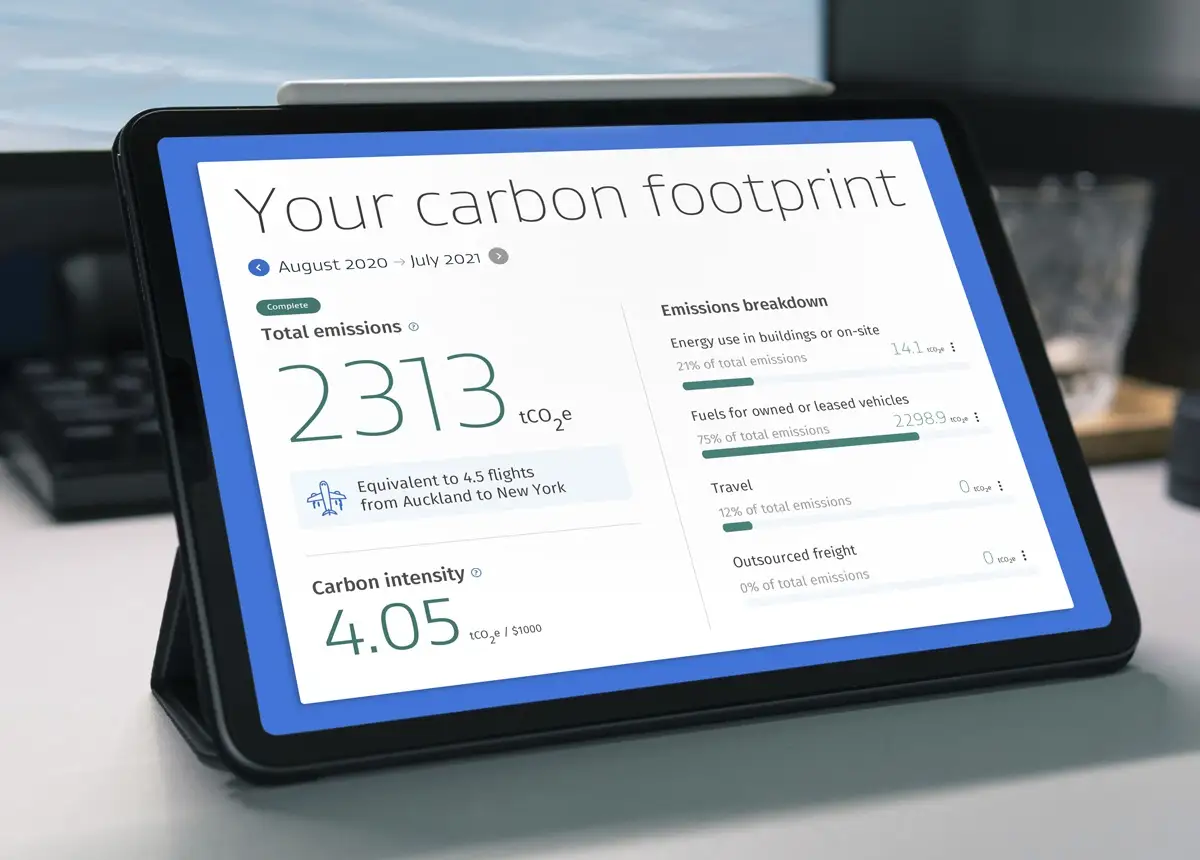Before you can reduce your emissions, you need to know where they come from. Once you know what to measure and how to measure, you can get a good picture of the carbon footprint of your business. Then you will be able to see where you can make the most impact.

What makes up the carbon footprint of a business?
Your carbon footprint is an estimate of the emissions released by your business activities over a year. Greenhouse gas emissions are created through things like energy use and sending waste to landfill.
For example, direct use of fossil fuels such as petrol for vehicles releases carbon dioxide into the atmosphere. Electricity use is linked to emissions because New Zealand’s electricity grid is not yet 100% renewable – around 15-20% of our electricity is generated by burning coal and gas which releases carbon dioxide. And when waste is left to decompose in a landfill, it releases greenhouse gases – predominantly methane.
How carbon footprints are measured
Your carbon footprint is expressed in tonnes of carbon dioxide equivalent (CO2-e) emissions. Measuring your carbon footprint will give you clarity over your organisation’s emissions hotspots and help you identify which areas offer quick wins that are worth targeting first.
Once you have a baseline, you can start to set targets to reduce emissions. Repeating the measurement process every year means you can track your emissions consistently and accurately.
To use a carbon calculator like the Climate Action Toolbox, you’ll need to collect your energy use data. This information can typically be sourced from invoices or directly from your suppliers. The calculator will convert your energy use from litres of fuel or kWh of electricity (for example) into CO2-e emissions.
Use the Climate Action Toolbox
The Climate Action Toolbox is a free and easy way to get started with emissions measurement. The carbon emissions calculator is designed specifically for smaller New Zealand businesses.
- Measure your emissions – Provide data on your business activities and get an estimate of your carbon emissions.
- Build your action plan – Learn where you can make impact and create your emissions reduction plan.
Scope 1, 2 and 3 emissions
You may come across reference to Scope 1, 2 and 3 emissions. These are from the Greenhouse Gas Protocol, which has developed internationally recognised standards for emissions measurement.
|
|
Definition | Example |
| Scope 1 | Direct GHG emissions from owned or controlled sources |
|
| Scope 2 | Indirect GHG emissions from the generation of purchased energy |
|
| Scope 3 | Other indirect GHG emissions occurring because of the activities of the organisation but generated from sources that it does not own or control |
|
What to measure and where to find the data
Find support
You can access training and resources through organisations like the Sustainable Business Network. Many New Zealand businesses get support with emissions measurement and management through a certification company such as Toitū or Ekos.


